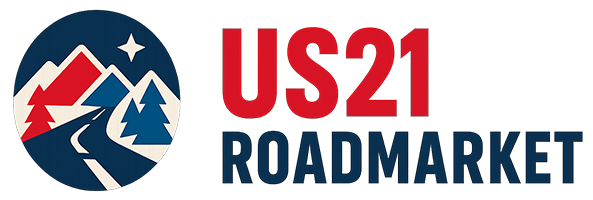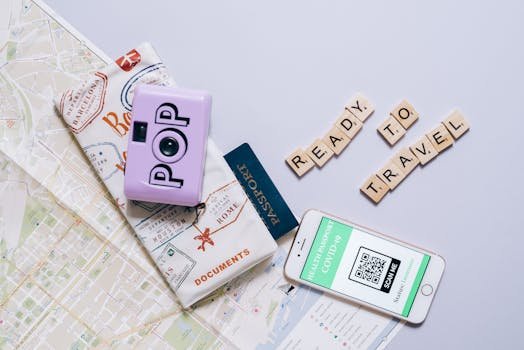A Border-Proof System for Receipts & Proof-of-Funds
If you move countries while running a business or investing, your documents are your lifeline. Banks want proof-of-funds (POF), tax offices want receipts and statements, and compliance asks for CRS/FATCA evidence—often when you’re on a shaky airport Wi-Fi. This playbook gives you a portable, encrypted, timestamped records system you can deploy today: what to keep, how to structure it, naming standards, capture workflows, retention rules, and emergency access.
Introduction: Why nomad record-keeping is different (and critical)
Traditional advice assumes you have a fixed desk and a filing cabinet. Nomads don’t. You cross borders, switch SIMs, and use multiple banks/brokers. That creates three risk zones:
- Proof-on-demand: immigration officers, landlords, and brokers may ask for proof of funds at short notice.
- Audit trail drift: receipts live in inboxes, wallets, and foreign apps; without a system, you can’t prove expenses, tax residence, or treaty eligibility.
- Device loss & access: a stolen laptop or locked phone can strand you without insurance cards, statements, or 1042-S forms.
The answer is a digital-first, border-proof setup: encrypted cloud vault + clean folder tree + UTC-focused naming + capture automations + annual audits. Build it once; carry it everywhere.
What records you actually need while traveling
Financial statements (bank, broker)
- Monthly bank statements (PDF + CSV if available).
- Broker statements (monthly + annual), trade confirms, and transaction exports (CSV).
- Keep multi-currency breakdowns; FX is a frequent audit topic.
Tip: Export CSV/MT940 where offered; PDFs are for humans, CSVs are for audits and reconciliations.
Tax documents (1042-S, local tax returns)
- 1042-S (US-source income for non-residents), tax returns (home country), assessments/payment receipts.
- Attach your W-8BEN/W-8BEN-E confirmation and Tax Residence Certificate (TRC) for the year.
- Add tax forms: Basics of W-8BEN-E and keep room for Reading the 1042-S.
Receipts for deductible expenses
- Lodging, flights, co-working, software, client meals, SIM/eSIM, equipment.
- Always capture vendor, date/time, amount, tax breakdown, currency, and country.
Proof-of-funds letters
- Bank/broker on-letterhead POF for visas, rentals, or onboarding.
- Some scenarios accept self-generated statements (annotated PDFs) when official letters are slow—pair with original statements.
Insurance documents
- Health/travel policy PDFs, coverage summaries, emergency numbers, claim forms, claim evidence.
Contracts and invoices
- Signed service agreements, SOWs, change orders, invoices, and payment proofs.
- Keep vendor/client KYC tidbits (registered address, tax ID) for cross-border invoicing rules.
The digital-first system
Cloud storage architecture (privacy-focused)
Use end-to-end encrypted storage or encrypt before upload:
- Options: Tresorit, Proton Drive, Sync.com, or Cryptomator/VeraCrypt on top of iCloud/Drive/Dropbox.
- Keep a local encrypted vault mirrored to the cloud; treat your laptop as a cache, not the single source of truth.
Folder structure that scales
Drop this into your vault root:
Nomad_Records_System_Starter_Kit_2025/
├── 00_Identity/
├── 01_Financial_Statements/
│ ├── Bank/2025/01/
│ └── Broker/2025/01/
├── 02_Tax/
│ ├── 1042-S/2025/
│ └── Returns/2025/
├── 03_Receipts/2025/01/
├── 04_Proof_of_Funds/
│ ├── Requests/
│ └── Letters/
├── 05_Insurance/
│ ├── Policies/
│ └── Claims/
├── 06_Contracts_Invoices/
│ ├── Contracts/
│ └── Invoices/2025/
├── 07_Compliance/
│ ├── CRS_FATCA/
│ └── W-8_and_Treaties/
├── 08_Travel_Evidence/
│ ├── Flights/
│ ├── Lodging/
│ └── Border_Stamps/
└── 99_Emergency/
Download the starter kit (ZIP) with this structure and templates:
Nomad_Records_System_Starter_Kit_2025.zip
Naming conventions and dates (UTC timestamps)
Use UTC-first, machine-sortable filenames:
YYYY-MM-DDThhmmZ__COUNTRY-CITY__TYPE__COUNTERPARTY__AMOUNT-CURRENCY__NOTES.ext
Examples:
2025-03-15T0942Z__ES-Madrid__RECEIPT__Cafeteria_Sol__12.40-EUR__breakfast.pdf2025-03-15T1010Z__ES-Madrid__BANK_STATEMENT__Wise__Monthly-Statement.pdf2025-03-16T0820Z__US-NY__POF__BrokerName__Balance-Only.pdf
Why UTC? Timezones change; UTC doesn’t. It simplifies audit trail travel across borders and avoids off-by-one-day errors.
Encryption and password management
- Store the vault inside full-disk encryption (FileVault/BitLocker).
- Use a password manager with emergency access (1Password, Proton Pass, Bitwarden).
- Add hardware keys (YubiKey, Titan) for 2FA; keep backup codes sealed.
Receipt capture: apps and workflows
Mobile scanning apps (Adobe Scan, CamScanner, etc.)
- Scan immediately; save as PDF, not JPEG.
- Force OCR so text is searchable.
- Rename to UTC format on the spot.
Email forwarding rules (statements → cloud)
- Create rules: statements from
@bank.com→ auto-forward to your vault’s email-to-cloud address (or to an inbox folder you sweep weekly). - For invoices/receipts, use a unique alias like
receipts+you@yourdomain.
API integrations (banks, brokers)
- Where available, connect Plaid/Tink-style feeds to your accounting tool; still export native PDFs/CSVs monthly for your vault.
- Brokers: schedule a monthly export of transactions to CSV.
CSV exports for trading history
- Keep CSV for: ticker, CUSIP/ISIN, trade date/time (UTC), quantity, price, fees, currency, FX rate.
- This supports basis and gain/loss reporting, even if you change brokers mid-year.
Paper backups: when and what
Critical documents to carry physically
- Passport (obviously).
- One notarized/certified copy of passport page + MRZ (stored separately).
- Insurance card and emergency instructions.
- One bank statement or POF letter if you anticipate checks.
Waterproof/fireproof portable solutions
- A document pouch or A6 waterproof wallet in the backpack.
- Keep a second copy at a trusted address.
Certified copies and notarizations
- Some authorities demand apostilles or certified translations. Keep a scans folder with certificates and a note where originals are stored.
Proof-of-funds documentation
Types of POF letters
- Balance-only (as of date).
- Average balance over period.
- Availability statement (“funds are immediately available”).
- Broker version (portfolio value; may be accepted for rentals and visas).
Requesting from banks/brokers
- Use the POF request template from the kit:
04_Proof_of_Funds/POF_Request_Template.txt - Ask for: letterhead, officer name/signature, contact details, as-of date, last 4 digits of account/IBAN.
Self-generated statements (when acceptable)
- Some landlords/offices accept annotated bank PDFs + POF self-statement (template included).
- Always include statement date, account holder, masked IBAN, and highlight balances.
Audit trail for tax purposes
Geolocation metadata
- Turn on location tagging in your scanner/camera for receipts; it supports where the expense happened.
- Keep ride-hail and POS receipts—timestamps + location are gold.
Transaction timestamps across timezones
- Enter UTC and local in your Receipts_Log.csv (included in the kit).
- Note country (ISO-2) and city to align with per-country tax rules.
Evidence of physical presence (flight receipts, hotel confirmations)
- Save flight e-tickets, boarding passes, hotel invoices, border stamp photos under
08_Travel_Evidence/. - This backs up tax residence, CRS self-cert, and even W-8 treaty claims.
Compliance calendar: what to save and for how long
Tax records (typically 6–7 years)
- Keep returns, assessments, and supporting docs for 7 years (or your local rule if longer).
- For investments, keep basis records until disposal + 7 years.
CRS/FATCA documentation
- Retain CRS self-cert, W-8, and TRC copies for at least 7 years from the reporting year.
- When you change countries, keep both years’ documents together for split-year clarity.
Investment records (until disposal + 7 years)
- Trade CSVs, corporate actions, dividend statements, and 1042-S forms.
- If you transfer brokers, export closing and opening statements to preserve cost basis.
Starter calendar (CSV) is in the kit: Compliance_Calendar_Template.csv.
Emergency access: the “hit by a bus” scenario
Sharing access with trusted person
- Set up emergency access in your password manager with a 48–72 hour hold.
- Share the Emergency Card (template in
99_Emergency/) in a sealed envelope.
Digital inheritance planning
- Document where the vault lives, what it contains, and how to access 2FA.
- Consider a simple will covering digital assets and appointing an executor.
Emergency contact card with vault info
- Fill in
99_Emergency/Emergency_Card_Template.txtand print one copy. - Keep one at a trusted address and one in your travel pouch.
Annual record audit: a nomad’s spring cleaning
- Jan: Export prior year’s bank/broker statements & trade CSVs.
- Feb: Reconcile receipts; categorize and archive Q4.
- Mar 15–20: Download 1042-S (if applicable) and verify treaty rate.
- Apr/Jul/Oct/Jan: Quarterly receipt sweeps; update Receipts_Log.csv.
- Renewal month: Insurance policy refresh; file new PDFs.
- Jun: Test emergency access with your trusted contact.
Your second passport is your document vault
A good vault isn’t a “nice to have”—it’s your second passport. It gets you rental keys, visas, bank accounts, tax refunds, and calm border crossings. Build the digital-first, border-proof system once: clean folders, UTC filenames, encrypted cloud, automation routes, and an emergency plan. Then keep it boring—little habits, done consistently—and your paperwork will travel as smoothly as you do.
Pair solvency letters from Proof-of-Funds on Demand.



